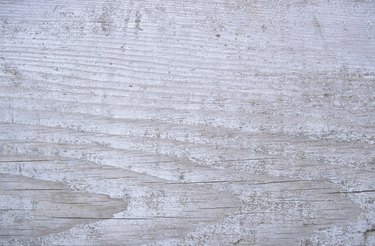
Whitewashing is a painting technique that adds color to wood while still retaining the look of the wood grain. It is also called "color washing" or "lime washing" when a color other than white is used. Whitewashing with interior latex paint is an easy way to add a decorative finish to furniture, shelves or anything else made from wood.
Preparing the Paint
Video of the Day
Mix interior latex paint with water to create the whitewash effect. Larger amounts of water in the mixture will result in a lighter paint finish. A 50-50 water to paint mixture creates an acceptable whitewash finish on most wood. Make a small amount of whitewash and paint a small piece of scrap wood to see how the mixture will look, then adjust the ratio based on whether you want a heavier or lighter cover.
Video of the Day
Prestaining
Woods such as pine, oak and birch are very light woods that may have trouble making themselves seen through even the lightest of whitewashes. Prestain the wood with a natural wood color that is darker than the original wood. Brush it on lightly. Make sure to follow the direction of the wood grain. Select a stain with a sealant or seal the stain after it dries completely to prevent the stain from becoming wet again when the whitewash is applied.
Tools
Whitewash is always applied with a paintbrush and not a roller. Mix the whitewash in a 5-gallon bucket to avoid splashing, and continue to use the bucket to paint from during the application process. Paint trays are difficult to work with, because whitewash is much thinner than regular paint and spills out of the tray much more easily. A plastic or heavy canvas drop cloth is important, because whitewash will soak through newspaper and thinner cloths very quickly.
Technique
Sand the wood down lightly before applying the whitewash to make the surface easier for the paint to grab. Wipe the surface down to remove all of the dust. Apply the whitewash in the direction of the wood grain with a wide paintbrush. After two coats of whitewash, apply an invisible sealant to protect the finish, or select a sealant varnish to give it a little bit of luster.